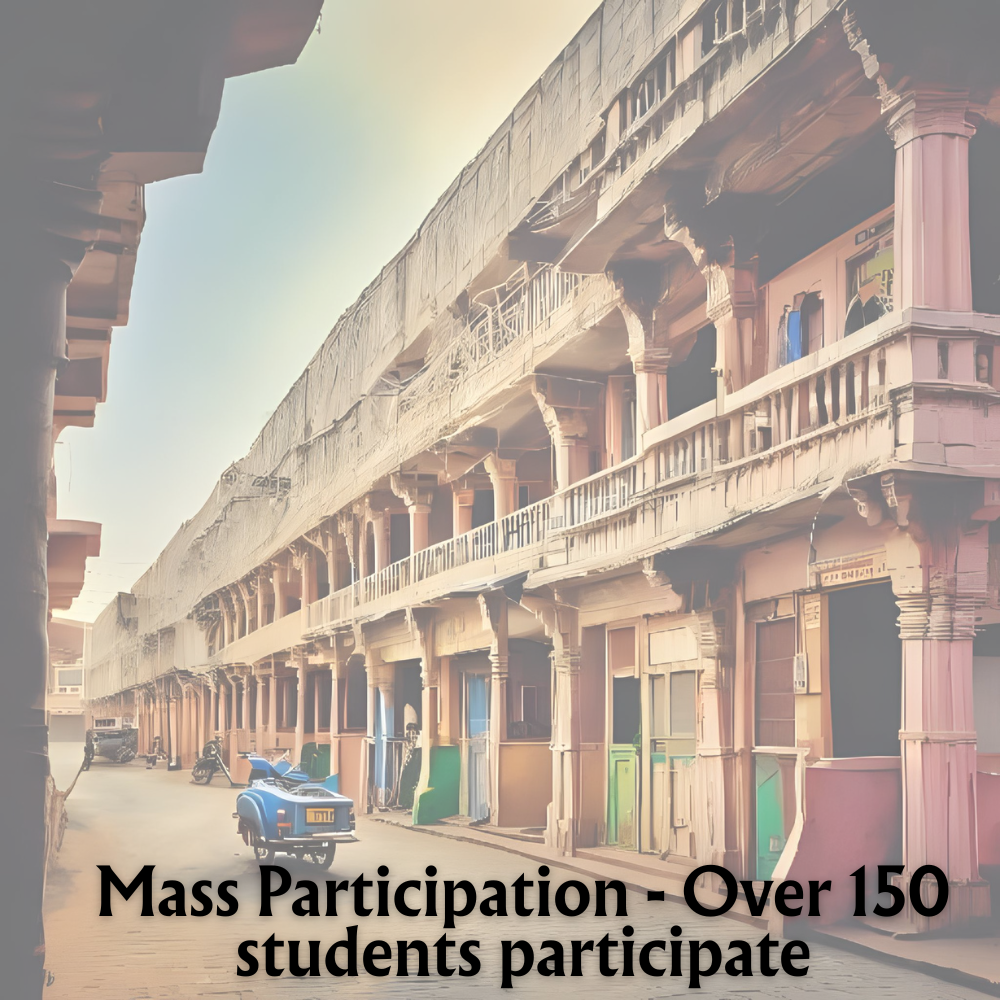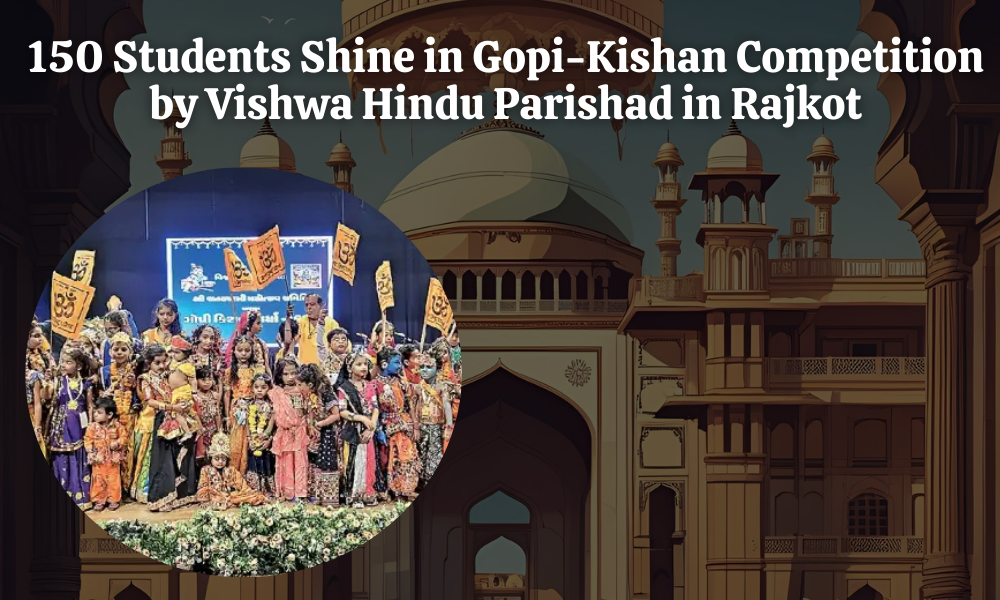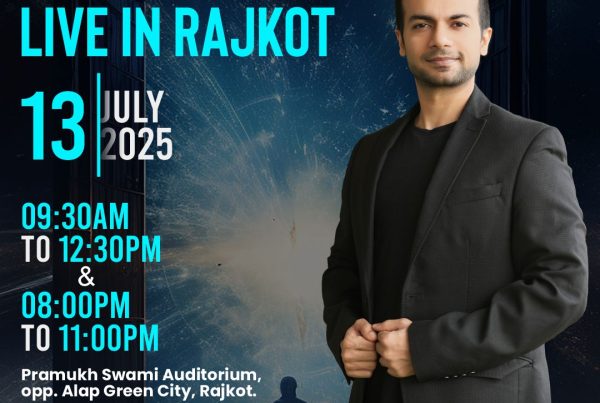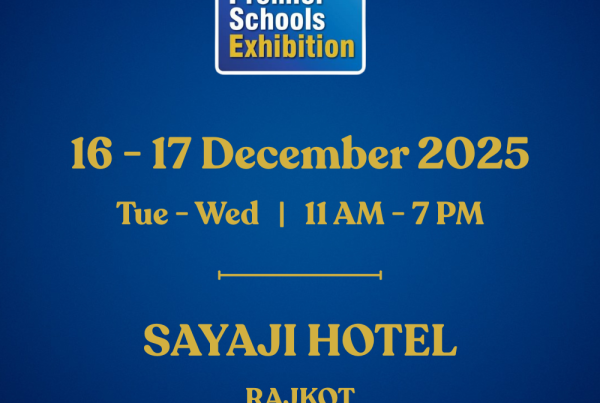
Rajkot, was recently adorn with the vibrant competition of Gopi-Kishan, hosted by the Vishwa Hindu Parishad. This year there were more than 150 children, clad in their little Krishna and Gopi costumes, filling the stage with colors, along with smiles and bhakti. There were the smallest of toddlers putting butter pots on their heads, to older kids who were bold enough to act make a skit about the acts of Krishna, and every performance felt like a peek into our cultural inheritance. Events like this don’t just entertain; they both entertain and keep a pulse on the past in the hearts of the future generation.
A Tradition that Lives On
For many years now, the Gopi-Kishan competition in Rajkot has become more than just an event; it has become something special for families to look forward to. Hosted each year by the Vishwa Hindu Parishad, it brings children alive to Krishna’s playful, divine stories in the most interactive way possible. Oftentimes, parents will spend days working with their children to develop costumes (e.g., same hand-stitched dhoti and costume crown consisting of soft peacock feathers), and grandparents will recount stories of Krishna’s mischief to utilize in the children’s performances—a joy-filled experience.
It is remarkable to see, through this tradition, that it has rather quietly become, for generations, a bridge between generations (parents and grandparents with grandchildren) and a way to engage in lived experiences, while keeping both devotion and culture alive in a way that books could never accomplish.
Mass Participation – Over 150 students participate
In this year’s Gopi-Kishan competition, we had a huge turnout of over 150 children in groups of 6. From the tiniest three-year-olds to the most confident twelve-year-olds, every group was full of personality and childish delight. Every batch also had fifteen little Krishna’s and fifteen Gopi’s, all in colourful traditional Indian apparel that looked like they had just come from a Janmashtami celebration. What was most memorable was the solid work and thoughtfulness behind each costume. Many of the parents were involved in making them, and the outfits included extra decorations—a rapid amatuerish bead blanket, a flutes hand painted, or just tiny butter pots that may have been perfect props. Again, this was not just a contest, it felt as though the whole community came together to celebrate love, devotion, and fun, on that cozy sunny Saturday afteroon.
The- cheer from the audience, the proud look of the children that were picked up between each performance, and the innocence of the kids acting—we are left with warmth in the hall, long after
the applause is over. There are moments that remind us why we continue to have cultural celebrations, as they create memories that are often more resilient than a day itself.

Community Spirit – Event filled with cultural pride, happiness and blessings
The Gopi-Krishna competition involved over 150 children, all ages 1-12, wearing brightly colored traditional dress, outside, in the cold. The children were organized into six groups with each presenting Krishna, Radha, and all the gopis, with exquisite attention to detail to each child’s costume – all with makhan pots, flags, saffron marks with an ‘Om’ etching.
Blessings were offered by attending elders and affirmed by organizers to ensure that every child added value and felt valuable. The joy expressed on both the stage and audience level was palpable, and there was to be no ‘loser’. The occasion became more than a competition for prizes, it was a testament of culture, bringing the community together through traditions and meaning passed from generations, the children were given an opportunity to perform with confidence from an audience and respect from their foreparents, and the effort and emphasis on meticulous costumes. Attention was drawn to the youngest children, many of whom barely were able to hold their prop, nevertheless, they received smiles and claps – a real highlight for the community.
Prizes and Acknowledgment
As the competition came to an end, prizes were given to the winners of each group praise, with acknowledgment of their hard work and creativity. Moreover, winners from the six groups had from top three participants in each category were awarded for their splendid representation of Krishna, Radha, and the gopis. Children received trophies and certificates to recognized them for the meaningful and joyous gift they received in addition to the material recognition.
For many the true reward was the audience’s appreciation and blessings from their elders, which added even greater sense of pride to their achievement. The applause, cheers, and a countless number of kind remarks gained an atmosphere of celebration where every participant—winner or not—could enjoy. The experience undeniably valued overall participation and cultural spirit, just as, if not more so, than individual victory.
At the end
Overall, the Gopi-Krishna festival had the less of the feel of an event but rather a loving embrace that stitched us together in a continuum of heritage. The colorful performances, the sincere blessings from the clergy and offers, thoughtful prizes, and reflections were not just box ticking exercises, but a living portrayal of the joy expressed in passing on the spirit of tradition. The lively fun of children, and the labor of love from the kumite organizers, and the laughing smiles of the audience morphed into memories that will be cherished years from now. You know, events like this don’t reflect a way to remember the past, rather, they produce new spirit to move forward in time to calculate the event further.



